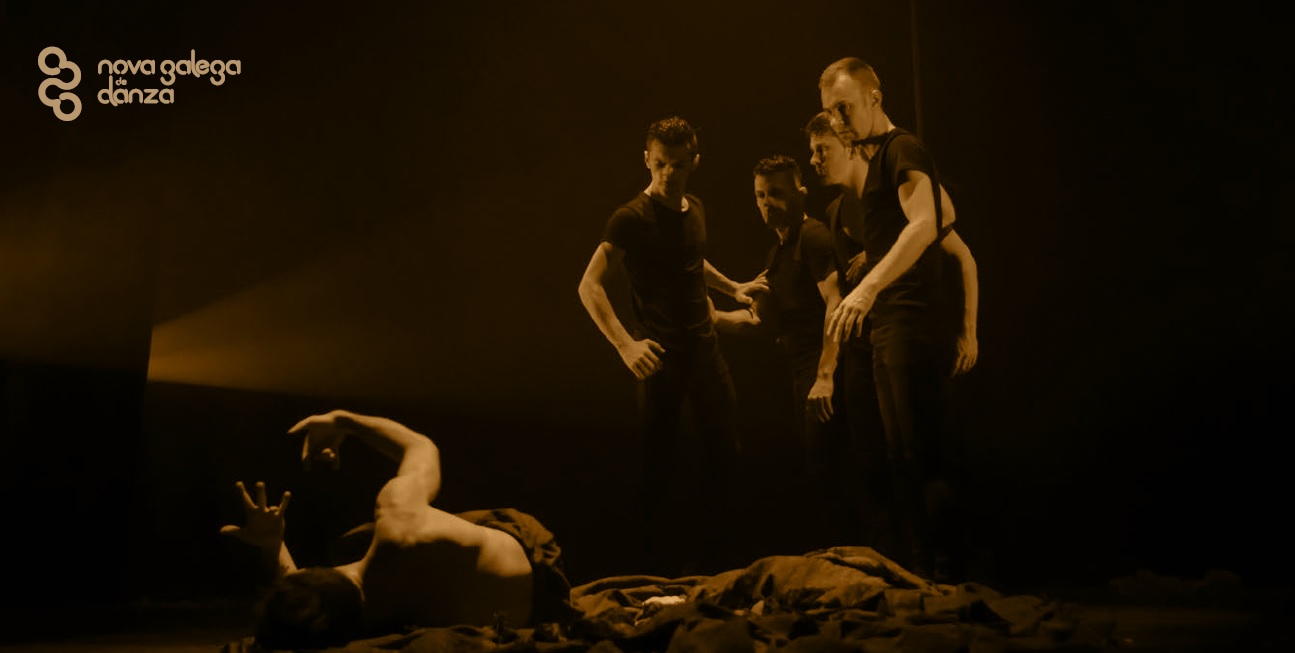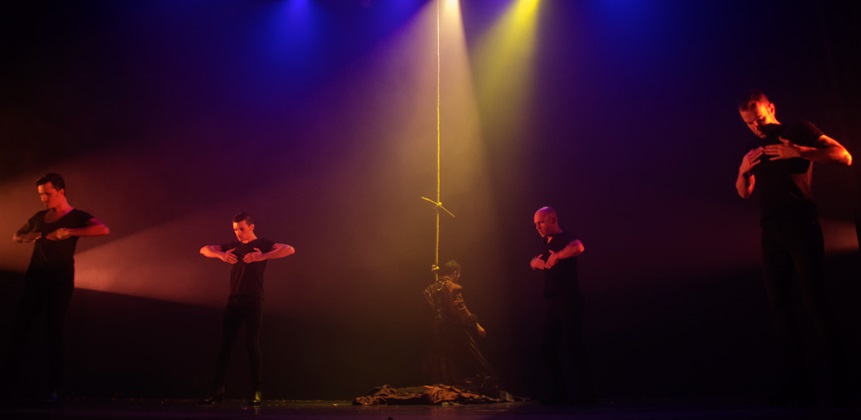Sergio Moure de Oteyza – SON Ballet: Exclusive Interview
Whenever we talk about composers, we talk about their music for film or television, and in rare times, we talk about the music they create for games, ads or even musical. But this time, we are going to give a surprise and we talk about the music … a ballet!
The author of this work is the composer Sergio Moure-road, which already has a past as a dancer in a theater company, besides having composed music for the genre.
The ballet in question is called SON, and after several months of hard work, debuts on Friday May 27 at the Castro Theatre Rosalia de La Coruna, later to start a world tour.
But I will not extend much in the preambles or previous explanations, because I think it’s best that you spend to read the interview we did to Sergio Moure, which is fully explained the project, from how it arises, how is develops into maturity.
Interview with Sergio Moure
Hi Sergio, thank you very much for attending and take a moment, considering the hectic planning of work you do.
You’re welcome. Always happy to chat with you, but the truth is I’m going to sleep for a week followed when the ballet is released and starts up the entire assembly (laughs) because we recent weeks nonstop.
First, tell us something about this project. Put us in a situation. What does it consist of? How do you get it?
I called a friend, Inma Castaño, producer of Filmax, who knows the dance company Nova Galega de Danza, a contemporary company, but had set up a new show called SON where they wanted to merge the Galician music, Celtic touches and Irish, with Andalusian flamenco influences, Arab and. A mixture of north and south.
To do this, the choreographer of Nova Galega de Danza, Jaime Pablo, called Carlos Rodriguez, who is a choreographer and dancer who has been in the Nuevo Ballet Español and also has his own company called Rojas y Rodriguez, well known, and they started working on the idea.
And then, here in the midst of this assembly, they saw they needed a composer who put music to them this amalgam of ideas, and it was where Inma Brown thought of me as a connoisseur of the Galician music.
It has been a very difficult project, yes, as I had to do a little coherent fusion, I mean, if you do not carefully, you can fall into the pastiche and mix things anyway. I informed a lot and I have documented long before the merger is worthy and consistent, and I hope I have succeeded.
What are differences between composing for ballet and composing for other media such as film or TV?
Interestingly before composing music for film, my first assignments were to dance and not for movies. When I was a student in Barcelona, I was composing music for contemporary dance, well … and indeed companies !! I danced for years, but then I realized that what I liked was composing music.
It was very interesting to go back to those origins, after so many years composing for film and television. It is another way of working with music, with dancers with the choreography, as in a ballet music in a different way than can do a film director or producer is perceived.
In the case of film, you adapt your music to what is filmed, and somehow your music transforms what is already on tape to give the desired direction, but in this case, there are actors and dancers on stage, things change, because in the same function, to listen to the music you’ve created, it is they who are influenced and adapt their performance to what transmits music. In a way, you are transforming your performances with your creation in each function.
Tell us something about the music that he composed. What did you want to represent and transmit it?
Mainly it carries background music fusion of both worlds, north and south, but it really is telling a story of an artist (principal dancer), who is representing throughout the creative process of an artist function. There are a total of 10 dancers, all men, and one of them is the principal dancer and the rest pretend to be a clay figures species and are shaped by music and by that artist or creator, to result in a work at the end of the function.
And so, the whole show is a thread that is the process of creation, his suffering, his passion, and that is what I have tried to represent with my music, and combining the melt layer on it.
What you told media when composing music? (Orchestra, instruments, vocals, etc …)
We have recorded many typical Galician instruments: bagpipes, tambourines, tarrañolas (Galician castanets) in a study of Lugo, in addition to voices, and then in Madrid we have been recording a flamenco cantaor (Juan Debel), cajón, palmas (with the participation of choreographer Carlos Rodriguez), an Arab instrument, etc …
A level orchestra have had a string ensemble recorded in Barcelona called Cordes del Mon, playing world music and have fitted perfectly into what we needed, as well as violins, violas etc .. have played instruments pretty archaic rope as the fiddle (very used to make continuous or low pedal notes) or ravel.
We have also recorded all the instruments on tracks, creating textures from severe acute note, so that then we could be adding to achieve the desired effect, looking for that archaic and primitive sound. It has been very nice, very organic.
We have been more than 10 days recording and mixing with the invaluable participation of my accomplice Jose Vinader, and the truth is that is running very well.
Have you had to adapt to what was done, or have had freedom, and ballet and choreography are adapted to your music? (At least partly)
The actors have been listening to pieces of music rehearsals and we have inspired each other, sometimes’ve inspired me and inspired me sometimes them. The trials already had music reference before, and many of the choreography and revolved around them, but many others have grown together.
I took the project when it was already under way (in fact, there was another composer who did some things before), and have composed music for choreographies that were already prepared, but in other cases, following ideas that have been given, have altered elements of the work to fit better with music.
For example in one of the starting blocks and will be a muñeira going to flamenco and enter and leave other elements, and how they contrast, it has been necessary to work a lot but has been very nice and very accomplished, transmitting much feeling.
I videotaped everything that was done in the tests, to analyze it in my studio and be able to compose and go synchronizing music. It was a very nice process, but very expensive and very hard.
So you accounts, it seems that deadlines have been very tight, right?
Me llamaron a finales de marzo, y llevo dos meses acudiendo a los ensayos y componiendo la música, que ha ido creciendo con la obra. Aunque en realidad, si descuentas las sesiones de grabación y las preparaciones previas, he tenido poco más de 3 semanas para componer todo, que es muy poco tiempo para una obra de estas características.
Además, al ser danza, ballet, hay mucho cambio de ritmo, y de color, con lo que las mezclas han sido bastante complejas. Cuando mezclas una banda sonora, ya tienes el sonido general, las ecualizaciones, pero como en este caso, cada tema es algo diferente, es como si estuvieras mezclando un disco de música moderna, donde cada canción es diferente.
When do you debut?
Although the premiere is on May 27 at the Rosalia de Castro Theatre de La Coruna, and 23 we go to the theater and we will be preparing the assembly, to make soundcheck, etc … And although it is all recorded and mixed, at the premiere voices will go live. Let’s do a version of all music without vocals, that singers sing directly at the premiere, but then it will go all together in the following representations.
The idea is to tour later throughout Spain, and then the rest abroad.
Are you going to edit music?
It’s almost 80 minutes of music, and that most of the work has music except some parts with sound effects such as rain, wind and others who come to accompany the narrative development and help transitions.
Producers are very overturned in edit music, and already have a record company interested in the material, Karonte, and with intent to edit it, so to see if we are lucky, because minority gender is something the ballet.
Nothing else Sergio, I let you get back to work, which I am sure you have much to do yet.
Yes, Jose Vinader’s waiting to see if we finish mixtures and go to dinner (laughs)
Thank you very much for your time, and I hope that the work running smoothly and is a success with audiences and critics.
Thank you! So be it!
Incidentally, at this point of the article, we still do not know why the play is called “SON”, and I think we will have to attend one of the performances of the work to find out the real meaning of the title …. as it has multiple meanings: Sound Gallego, the verb to be in Castilian and Son in English …. Although it is likely that after what Sergio has told us, is a bit of everything, a mixture, a fusion, like his music.
Official Website http://www.novagalegadedanza.com/es/












